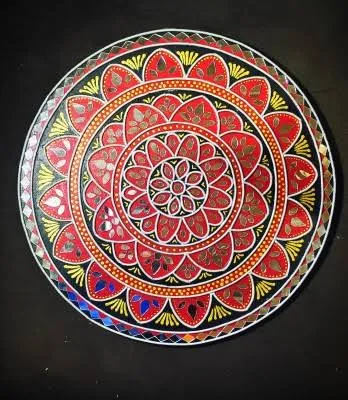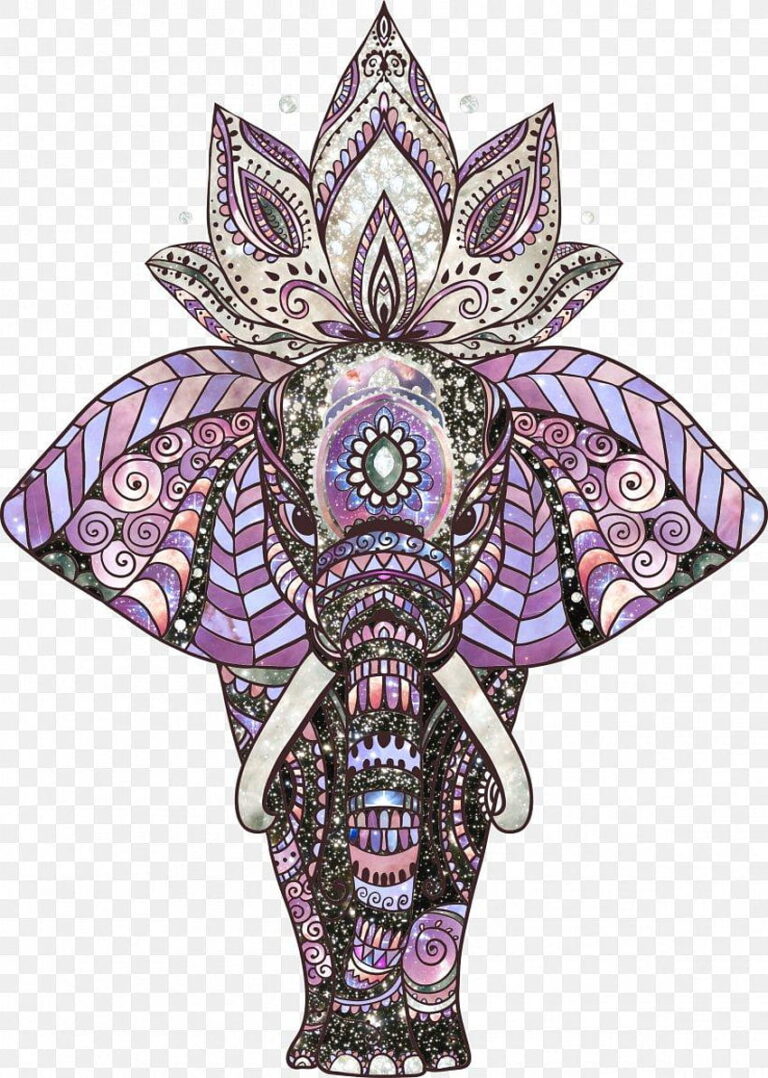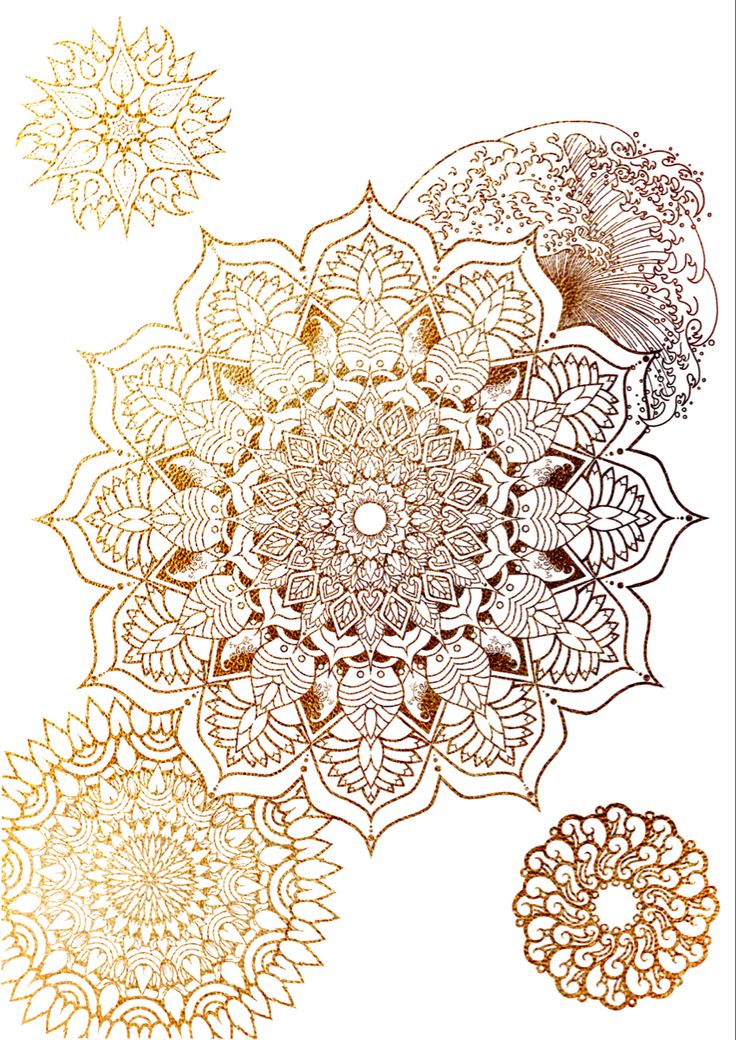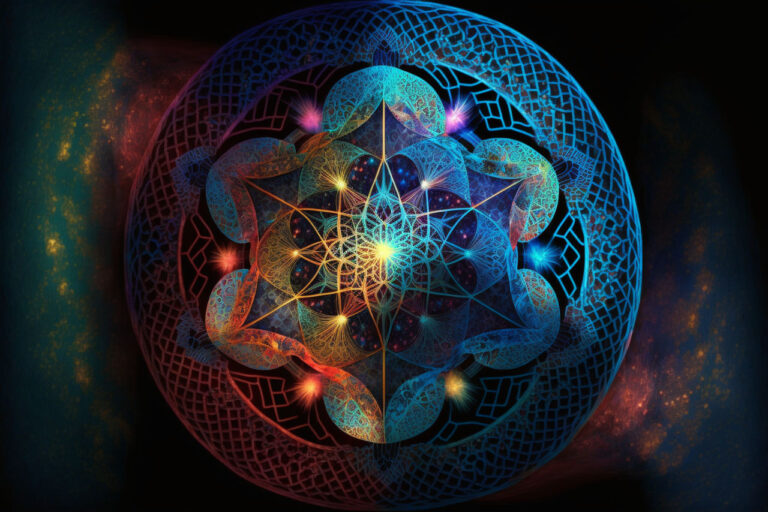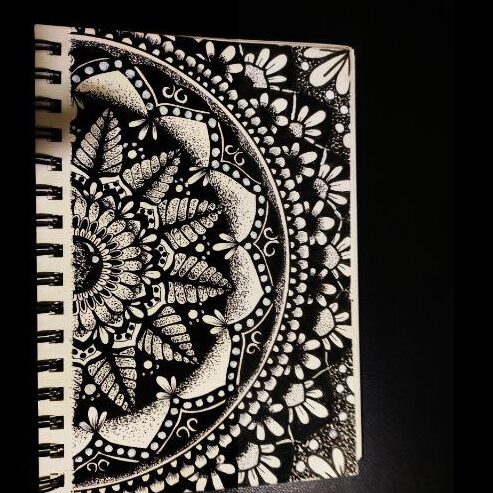Symbiotic Connection between Lippan and Mandala Art
Art serves as a bridge that connects diverse cultures, transcending boundaries and unifying individuals through shared expressions of creativity and symbolism. In the vast tapestry of artistic traditions, two mesmerizing forms, Lippan and Mandala, originating from distinct corners of the world, intertwine through their profound symbolism, therapeutic essence, and the pursuit of inner harmony.
Lippan: An Echo of Tradition
Nestled within the rural landscapes of the Kutch region in Gujarat, India, Lippan art boasts a rich heritage deeply rooted in tradition. This ancient artistry finds its origins in the ancestral homes of the Rabari community, known for their skilled craftsmanship. Traditionally, Lippan was used to adorn mud walls and interiors of homes, celebrating cultural events and festivals.
The process involves a meticulous blend of clay, camel dung, and natural fibers forming a plaster. Skilled artisans apply this mixture in intricate patterns and motifs, embedding small mirrors that catch the light and reflect a shimmering radiance throughout the space.
Over time, Lippan has evolved from a domestic tradition to a revered art form celebrated in various contexts. Contemporary artists have expanded its application beyond traditional homes, incorporating it into exhibitions and art installations, preserving its cultural heritage while embracing modern artistic expression.
Mandala: The Universal Symbol of Unity
In contrast, the Mandala’s history traces back through diverse cultural lineages across the globe. Originating from ancient spiritual practices in Hinduism and Buddhism, Mandala art symbolizes the universe’s cosmic order, representing unity, harmony, and the interconnectedness of all beings.
The circular form of Mandalas, adorned with intricate geometric patterns, divine symbols, and vibrant colors, serves as a sacred space for meditation and contemplation. These symbolic representations guide practitioners on a transformative journey towards self-discovery and inner peace.
Throughout history, Mandalas have been used in religious rituals, meditation practices, and art therapy, transcending cultural boundaries to become a universally recognized symbol of spiritual unity.
Certainly! Here are short paragraphs, each of 200 words, focusing on Lippan and Mandala art:
Lippan Art: Cultural Heritage in Clay
Lippan, an ancient art form originating from the vibrant heritage of Gujarat’s Kutch region in India, is a mesmerizing testament to artistic tradition. Skilled artisans meticulously blend clay, camel dung, and natural fibers, creating a plaster that adorns walls with intricate relief work. These patterns, passed down through generations, symbolize cultural events and celebrations. Mirrors embedded within these designs reflect light, illuminating spaces and infusing them with an enchanting radiance. Originally confined to traditional homes, Lippan has transcended its domestic origins, finding its place in contemporary art forms and exhibitions, preserving its cultural legacy while embracing modern artistic expressions.
Mandala Art: Cosmic Symmetry and Spiritual Harmony
Mandalas, originating from diverse cultural backgrounds such as Hinduism, Buddhism, and Native American traditions, serve as universal symbols of unity and cosmic order. These circular designs, adorned with intricate geometric patterns and vibrant hues, encapsulate spiritual symbolism. Mandalas guide individuals on transformative journeys, fostering inner peace and self-realization. Throughout history, they’ve been used in religious rituals, meditation practices, and art therapy, transcending cultural boundaries to become universally recognized symbols of spiritual unity and harmony among diverse cultures worldwide.
The Interwoven Threads of Lippan and Mandalas
While Lippan and Mandala art find their roots in distinct cultural origins, they share fundamental aspects that unify their essence:
1. Symbolism and Unity
Both Lippan and Mandalas embody the symbolism of unity and interconnectedness. The intricate patterns of Lippan and the circular symmetry of Mandalas reflect life’s cyclical nature, symbolizing wholeness and the eternal connection between all things in the universe.
2. Therapeutic Essence
The act of creating Lippan and Mandala art offers therapeutic benefits. Engaging in these art forms induces a meditative state, promoting mindfulness and tranquility. The repetitive nature of crafting these designs becomes a channel for relaxation, reducing stress and anxiety.
3. Cultural Significance
While Lippan embodies the cultural heritage and traditions of the Kutch region in India, Mandalas are prevalent across various cultures globally, representing spiritual beliefs and cosmic unity. Despite their cultural diversity, both art forms signify sacredness, spirituality, and a deeper connection to the cosmos.
Crafting Harmony through Artistic Practices
Engaging in Lippan and Mandala art transcends proficiency; these art forms offer accessible and inclusive avenues for creative expression and self-reflection:
Embracing Creativity and Expression
Whether practicing the intricate relief work of Lippan or drawing and coloring Mandala patterns, individuals can explore their creativity freely. These art forms provide a canvas for expressing emotions and thoughts without constraints.
Nurturing Inner Peace
The process of creating Lippan and Mandala art guides individuals into a mindful state, fostering a sense of inner peace and tranquility. The rhythmic strokes and intricate details become pathways to serenity, allowing individuals to immerse themselves in a state of meditative calm.
Embracing the Unified Essence
In essence, Lippan and Mandala art, despite their geographical and cultural roots, intertwine through their universal themes of unity, symbolism, and therapeutic qualities. Through these art forms, individuals embark on a profound journey of self-expression, cultural appreciation, and inner harmony.
Conclusion: Celebrating Unity Amid Diversity
Lippan and Mandala art stand as exquisite reflections of cultural diversity and the universal pursuit of tranquility. Their interconnectedness goes beyond visual aesthetics, resonating in their ability to evoke unity, mindfulness, and profound serenity. Embrace the richness of these art forms, allow their patterns to guide you into a realm of interconnectedness, and celebrate the harmony within diversity through the captivating allure of Lippan and Mandala art.

